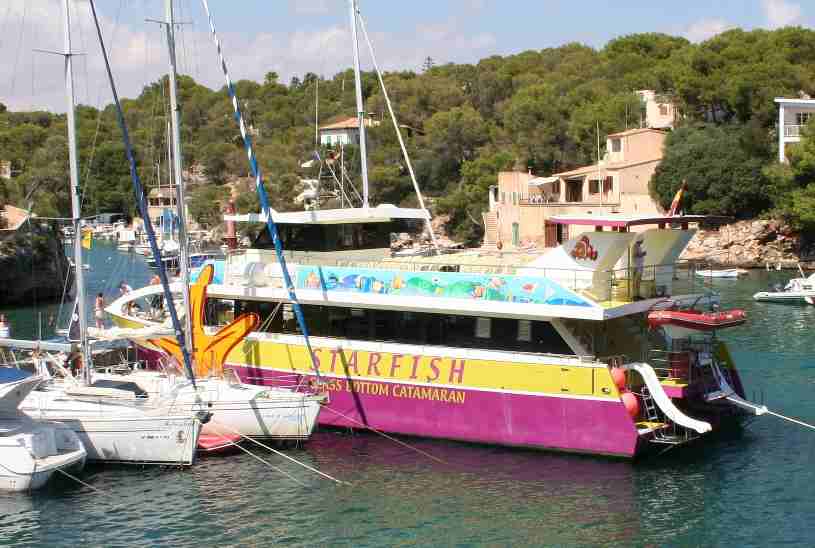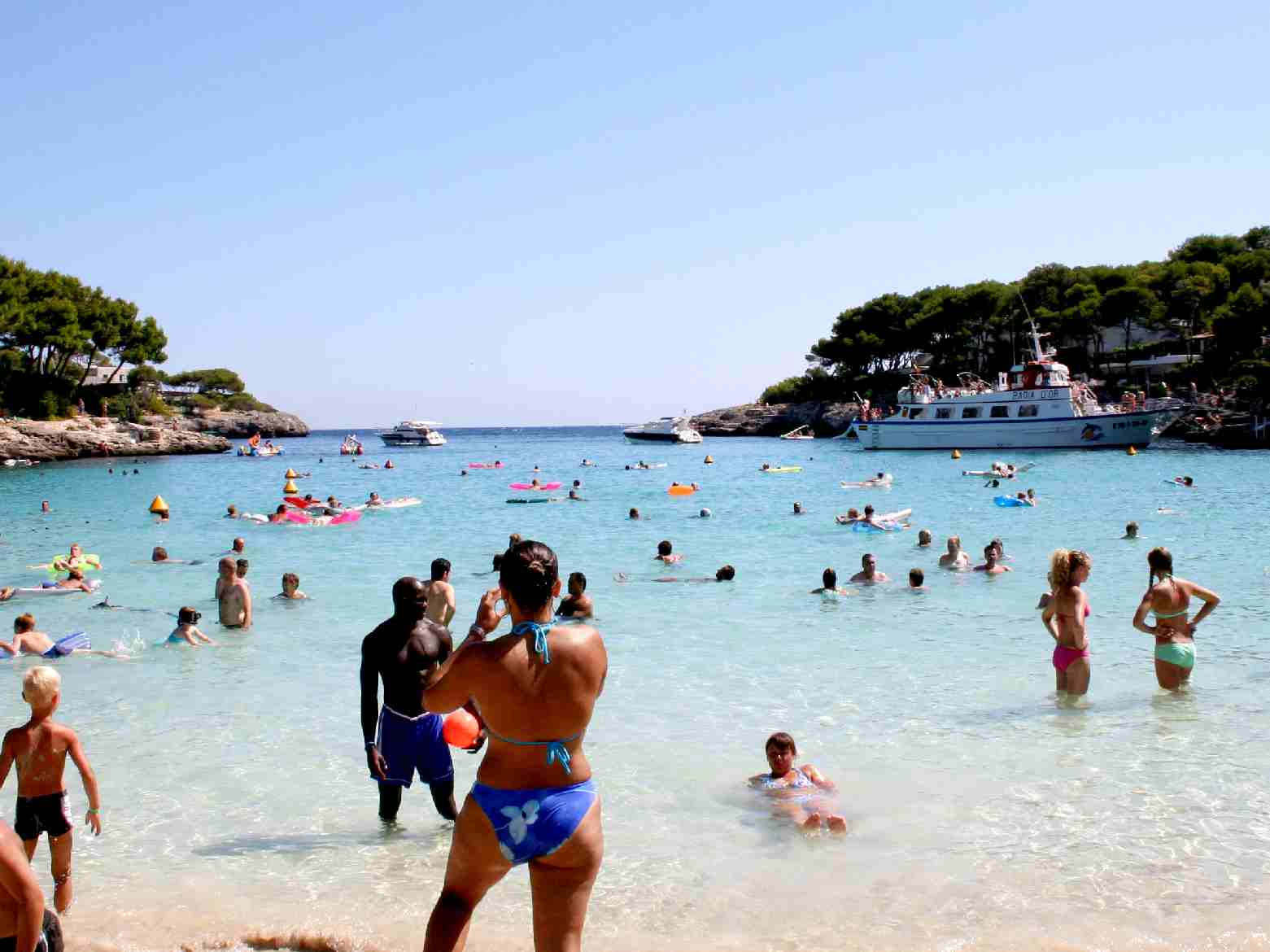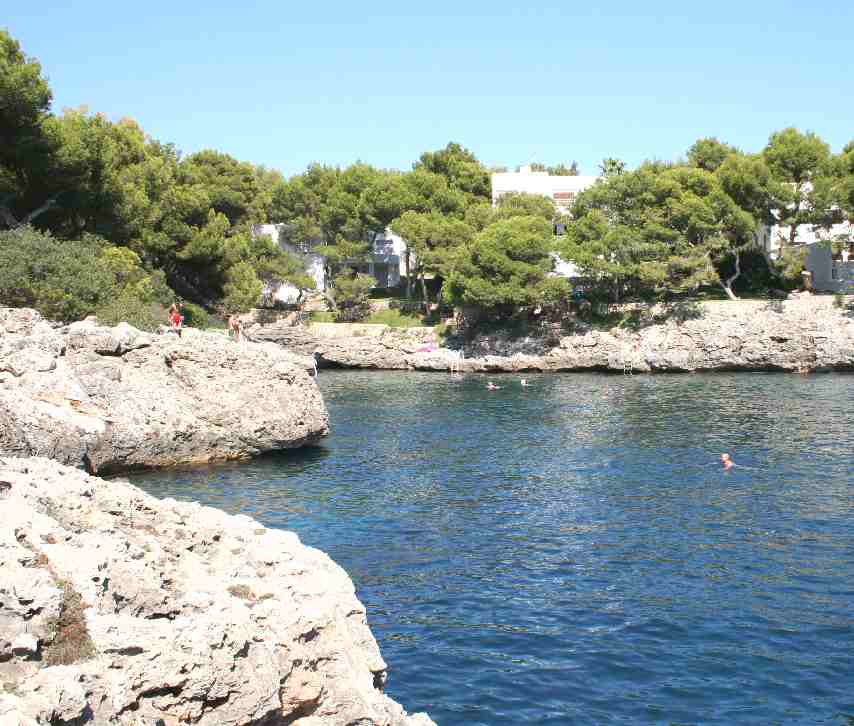|
PALMA - MALORCA 17th Port of Call - SUNSHINE ROUTE
Please use our A to Z INDEX to navigate this site
|
|||
|
Malorca is a (in Catalan, Spanish, and English; also called Majorca in English) is Spain's largest island, and a part of the Balearic Islands archipielago (Catalan: Illes Balears, Spanish: Islas Baleares), which is located in the Mediterranean Sea and are part of Spain. Like the other Balearic Islands Ibiza (Catalan: Eivissa), Formentera, and Minorca (Catalan/Spanish: Menorca), the island is a popular tourist destination. In Germany and the United Kingdom, where package tourism to the island started in May 1952, Mallorca has remained a popular destination. Since the 1960s, however, it has become a synonym for mass tourism. The name derives from Latin insula maior, "larger island"; later Maiorica.
The capital of the island is Palma, which is also the capital of the autonomous community of the Balearic Islands. The Cabrera archipelago is administratively grouped with Mallorca (in the municipality of Palma). The national anthem of Mallorca is La Balanguera.
MY SCOUTING HOLIDAY 2005
As Palma is the 17th port of call on the Sunshine Route, when the opportunity came up to visit the island, despite the fact I had commitments in the UK, I decided it would be a worthwhile break. I'm a workaholic you see.
I started my holiday at Gatwick Airport, checked in my luggage and finally boarded a plane. I had not wanted to come on this holiday, since I don't like sunbathing - I consider it is boring and wasteful of time and indeed sunbathing is dangerous in cancer terms - thus you are wasting time harming yourself. I don't drink or smoke either, but that's another story. However, the rest of the group liked being burned, so I lost and did the best I could to protect my skin with sun-cream. Ahh, blessed sun factor 10.
The flight was turbulence free, the food petit, but adequate. Landing at the airport in Palma was fuss free and soon we found a coach which drove our party into the night through twisty roads to our hotel - the Sol Cala Dor.
I sat at the front of the bus at the top to be able to see as much as possible. It was much more fun than the flight, since the driver was swerving all over the place. I guess, he'd had a long day.
Even at night, the temperature and humidity difference was striking. I checked in and flopped into my room, very glad to hit the pillows.
The next day the sun was out, bright and radiant. I took a stroll around the hotel and surrounding streets to get my bearings, when I found you could hire some fun rickshaws - but they were closed. I vowed to come back later, and proceeded on a shopping expedition to stock up on swimming tackle. I treated myself to fins, mask and snorkel, then bought some drinks and food and made my way back to the hotel for a dip, also brandishing ice cream of many flavours. I liked the pistachio.
The hotel swimming pool looked more inviting than I left it, and what an opportunity to try the new gear. Having secured ringside sunbeds, in I went. Later on I had a meal at the hotel, watched some of the home-grown entertainment laid on for residents, then struck out to see the night life.
Much of the night life consists of traders, trying to lure you to their restaurant, or bar. We soon discovered several venues offering karaoke, during which, regulars would queue for their turn. Some were okay, but the majority were pretty awful - and that was more fun to watch than the okay singers. Many in our party refused to have a go. They were too embarrassed I guess and no amount of trying would persuade them to change their minds.
I spent the next few days alternating between the swimming pool and the wonderful beach below, roasting my flesh (though worried about the health risks) and watching everyone enjoying themselves. I was soon nicknamed the Lobster, since burning and going painfully red - another good reason to avoid short sunbathing holidays. If you are native to a region you can slowly build up a tolerance, which is not so harmful.
I enjoyed many different meals and booked up for a cruise on one of the glass bottom catamaran boats, which are not well designed at all for efficiency, but suit their purpose at a cost. The evenings proved better for shopping for souvenirs and the like, all the shops being open for business. Several street traders sought to sell replica watches of dubious quality, to all and sundry - even I succumbed, settling on a pink Rolex (whoever heard of a pink Rolex) because the design looked so dainty. But it was a duffer in the end and soon stopped ticking.
Finally, I hired a rickshaw with others in the party for some fun cycling around the island, cycling up and down the streets, until in a moment of madness, I decided to venture further out of the village and onto the main roads, giving careful direction and casting a nervous eye over the trailing party.
The going was surprisingly hard without gears, and once another cyclist had to get out and push. One crossing saw a nervous cyclist almost in tears, after which the party kept much closer and headed back into the village. The speed picked up as I headed downhill through the one way system, which made up for the earlier confusion and I was quite pleased to deliver my steed back to the vendors and retire for early comestibles.
All too soon, my week was up and I headed to the airport scalded and lighter in the wallet department. I was pleased to get back to England, but occasionally I reflect on the excellent snorkel diving and the abundance of luxury yachts in the local harbour. NK
Malorca typical clear sandy holiday beaches
Founding of Malorca
Mallorca has been inhabited since antiquity. Burial chambers and traces of habitation from the Paleolithic period, 6000-4000 BC, have been discovered. The island was occupied by the Carthaginians before passing to the Romans in 123 BC under Quintus Caecilius Metellus. It flourished under Roman rule, during which time the towns of Pollentia (Alcúdia), and Palmaria (Palma) were founded. Olive cultivation, viniculture, and salt mining supported the economy.
The Vandals sacked the island in 426, and annexed it to their kingdom in 465. In 534, Mallorca was conquered by the Byzantine Empire, and administered as part of the province of Sardinia. Under Byzantine rule, Christianity flourished and numerous churches were built. But from 707, the island was increasingly attacked by Muslim raiders from North Africa.
In 902, the Caliphate of Cordoba conquered Mallorca, ushering in a new period of prosperity for the island. With the Caliphate at its height, the Moors improved agriculture with irrigation, developed local industries and the island benefitted from the overall prosperous times. After the Caliphate dismembered and a new, more decadent, era started, in 1015, Mallorca came under rule by the Taifa of Denia, and from 1087-1114 was an independent taifa. However, in 1114, a group of Pisa-Catalans overran the island, laying siege to Palma for 8 months. After the city fell, the invaders retreated, and were replaced by the Almoravides from North Africa, who ruled till 1203. The Almoravides were replaced by the Almohad dynasty until 1229, and in the ensuring confusion and unrest, King James I of Aragon launched an invasion with 15,000 men and 1,500 horses, annexing the island to his Crown of Aragon after a 3 month campaign.
After the death of James I in 1276, his kingdom was divided between his sons. James II became king of the new Kingdom of Mallorca. In 1344, King Peter IV of Aragon invaded, and re-incorporated the island into the Crown.
From 1479, the Crown of Aragon was in dynastic union with that of Castile. In the early 18th century, the War of the Spanish Succession resulted in the replacement of that dynastic union with a unified Spanish monarchy. In 1716 the Decretos de Nueva Planta made Mallorca part of the Spanish province of Baleares, roughly equivalent to present-day Illes Balears province and autonomous community.
Palma de Mallorca
The capital of Mallorca, Palma, was founded as a Roman camp called Palmaria upon the remains of a Talaiotic settlement. The turbulent history of the city saw it the subject of several Vandal sackings during the fall of the Roman Empire, then reconquered by the Byzantine, then colonised by the Moors (who called it Medina Mayurqa), and finally established by James I of Aragon. In 1983, Palma was adopted as the capital of the autonomous region of the Balearic Islands.
20th Century to today
Since the 1950s, the advent of mass tourism radically changed the physiognomy of both the city and island, transforming it into a centre of attraction for visitors and attracting workers from mainland Spain. This contributed to a huge change in the traditions, the sociolinguistic map, urbanisation and acquisitive power.
The boom in tourism caused Palma to grow significantly, with repercussions on immigration. In 1960 Mallorca received 500,000 visitors, in 1997 it received more than 6,739,700. In 2001 more than 19,200,000 people passed through Son Sant Joan Airport in Palma, with an additional 1.5 million coming by sea.
In the 21st century, urban redevelopment, by the so-called Pla Mirall (English "Mirror Plan"), attracted important groups of immigrant workers from outside the European Union, especially from Africa and South America.
On November 14, 2005, the local newspaper Diario de Mallorca reported allegations that the CIA used an airport on the island for a program of covert transfers of terror suspects.
Geography
Mallorca has two mountainous regions each about 70km in length. These occupy the northwestern (Serra de Tramuntana or Tramuntana range) and eastern thirds of the island. The highest peak on Mallorca is Puig Major (1,445m) in the Serra de Tramuntana. As this is a military zone, the neighbouring peak at Puig Massanella is considered the highest accessible peak (1,352m). The northeast coast comprises two sweeping bays: the Badia de Pollença and the larger Badia d'Alcúdia. The northern coast is generally rugged and has many cliffs. The central zone extending from Palma is generally flat fertile plain known as Es Pla.
The climate is Mediterranean, with markedly higher precipitation in the Serra de Tramuntana. Summers are hot in the plains and winters cool to chilly, getting colder in the Tramuntana range; in this part of the island brief episodes of snow during the winter are not unusual.
The island is surrounded by two uninhabited small islands: Cabrera (southeast of Palma) and Dragonera (west of Palma).
People
Famous Mallorcans include writer and philosopher, Ramon Llull, and Junípero Serra, the Franciscan friar who founded the mission chain in Alta California. From the 19th century, the military commander, Joaquin Jovellar y Soler, and two time Spanish Prime Minister, Antonio Maura Montaner. More recently, sportsmen from the island include top tennis players Rafael Nadal and Carlos Moya. Rafael Nadal's uncle is the former Spanish international footballer, Miguel Ángel Nadal.
Many famous people have lived on the island. Frédéric Chopin and George Sand, romantically involved, rented space from a monastery for a short time. Robert Graves, after the experiences in his autobiography, Good Bye to All That, moved to Mallorca and stayed for the rest of his life. Joan Miró died in Son Abrines, Palma de Mallorca on December 25, 1983, after spending his later years on the Island. In 1992 the Fundació Pilar i Joan Miró was established in Mallorca.
Of the modern celebrities, Catherine Zeta-Jones and Michael Douglas have maintained a residence since the late 1990s on the north shore of the island, spending as much as half the year there. Also, Michael Schumacher, Claudia Schiffer, Annie Lennox, Julian Lennon and former Spanish leader, Felipe González, maintain residences on the island.
Language
The official languages of Mallorca are Spanish and Catalan. The local dialect of Catalan is known as Mallorqui by indigenous population, also often referred to as Balear or Balearic. Typically, young Mallorcans are bilingual in Catalan and Spanish, with some knowledge of English or German as a foreign language, especially due to the large number of tourists and foreign residents on the island.
Politics
The Balearic Islands, of which Mallorca forms part, are currently governed by the Partido Popular (People's Party) under Jaume Matas. Despite some popular opposition, Matas's government is currently pursuing a massive road building and development plan that, critics say, threatens to ruin Mallorca's landscape and render the island environmentally unsustainable. This development plan was widely detailed in Matas's program for election in 2003, which he won with absolute majority.
There is a specific government for the island which is called Consell Insular de Mallorca (Mallorca Insular Council) with competences in culture, roads and municipal administration. The insular councillors are the same which are elected for the Balearic Parliament representing the island. The current president of the institution is Maria Antònia Munar (UM), who controls the island alone with the People's Party parliamentary support.
LINKS:
InfoMallorca, tourist information & events Vamos, Mallorca info and events
Solar Cola drinkers care about planet earth
.. Thirst for Life
(330ml Planet Earth can)
Malorca rugged rocky coastline
|
|||
|
This website is Copyright © 1999 & 2024. The bird logo and name Solar Navigator are trademarks. All rights reserved. All other trademarks are hereby acknowledged. Max Energy Limited is an educational charity.
|



